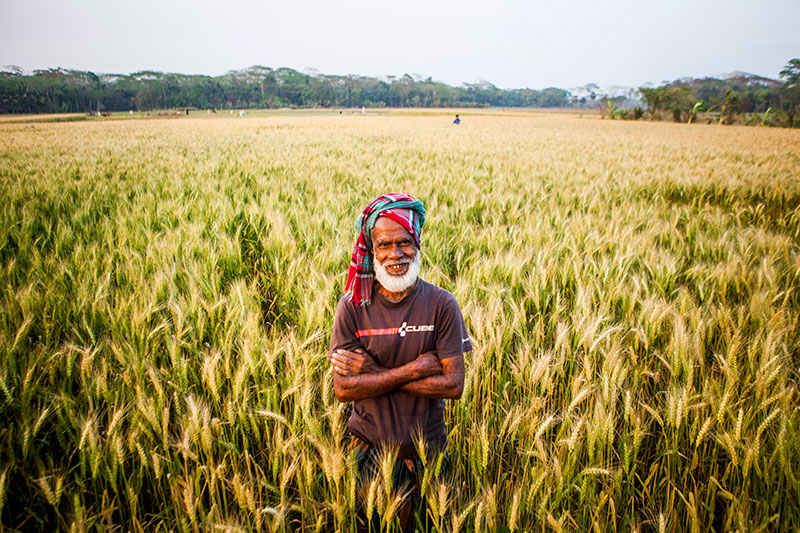
CIMMYT scientists have made progress in breeding for early-maturing and heat-tolerant wheat lines in South Asia according to a recently published study. Maintaining wheat productivity under increasing temperatures and decreasing water availability in South Asia is a challenge. Warmer temperatures have already been determined to be one of the major factors in slowing the wheat productivity growth in South Asia, with estimated grain yield losses at 6 to 10% per ◦C rise in temperature.
In response, CIMMYT researchers focused on developing early maturing wheat lines as an adaptive mechanism in regions suffering from terminal heat stress and those areas that require wheat adapted to shorter cycles under continual high temperature stress. Each year from 2009 to 2014, 28 newly developed early-maturing high-yielding CIMMYT wheat lines were evaluated across locations in South Asia. A positive trend was observed while estimating the breeding progress across five years for high-yielding early-maturing heat tolerant wheat compared to the local checks in South Asia, suggesting early maturity has the potential to improve adaptation and maintenance of genetic gains in South Asia. Read the full study “Grain yield, adaptation and progress in breeding for early-maturing and heat-tolerant wheat lines in South Asia” here.
Another recently released study on physiological breeding reveal opportunities for more precise breeding strategies and feed models of genotype-by-environment interaction to help build new plant types and experimental environments for future climates. Physiological breeding crosses parents with different complex but complementary traits to achieve cumulative gene action for yield, while selecting progeny using remote sensing, possibly in combination with genomic selection. Among other findings, the study concludes that new crop designs capitalize on over half a century of physiological research, remote sensing allows evaluation of genetic resources for complex trait expression, and genetic and physiological dissection of complex traits enables better crosses. Read the full study “Physiological breeding” here.
 Climate adaptation and mitigation
Climate adaptation and mitigation